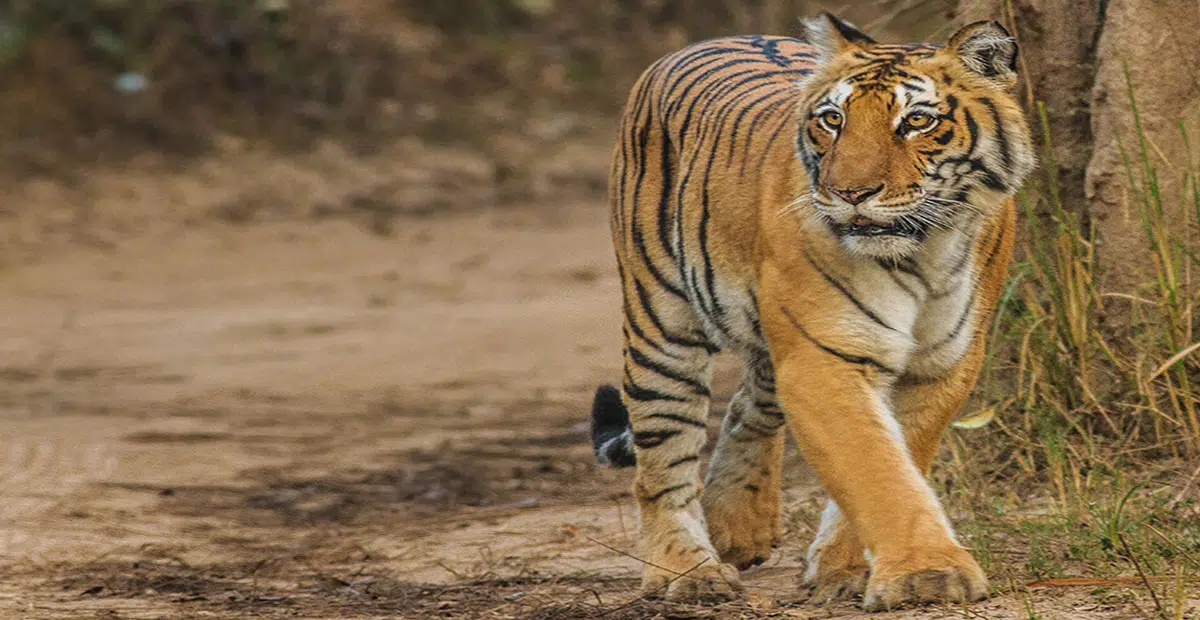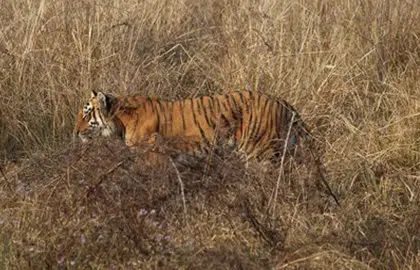Corbett National Park – The Oldest National Park in India
Overview
Jim Corbett National Park, India’s oldest and one of the most illustrious national parks, is situated in the Nainital and Pauri Garhwal district of Uttarakhand. It was primarily established as Hailey National Park in 1936 after which it was initially renamed as Ramganga National Park in 1954-55 and later changed to Corbett National Park in 1957 in the memory of Jim Corbett, a well-known British hunter and naturalist. This park was chosen in the year 1974 as grounds for launching an ambitious wildlife conservation project, Project Tiger, aimed at protecting and preserving the Bengal tiger from extinction and subsequently working towards increasing their numbers.

Information
Located in the foothills of the Himalayas at an elevation of about 1300 to 4000 feet, this park is home to a wide variety of wildlife species that attracts thousands of adventure and wildlife enthusiasts from all over the world. The resorts in Corbett National Park offer tourists a chance to experience the thrill of the wilderness by providing luxurious and adventure-filled living spaces. The reserve is spread over an enormous area of 1,318.54 square kilometres and is composed of hills, grasslands, ravines, ridges, a giant lake and exhibits a humid subtropical climate.
- Size – 520 Sq. Kms (Core area)
- Forest type – Dense deciduous forest with prominent Sal vegetation
Star Species
Corbett National Park boasts of its lush green landscapes, majestic views and its richly diverse flora and fauna. Over 73% of the park’s area is covered with dense deciduous forest that includes sal, peepal, haldu, rohini and mango trees. More than 586 species of migratory and resident birds have been recorded which makes this park is a heaven for bird watchers. The park is also home to around 50 species of mammals that include sloth bears, Asiatic black bears, Indian grey mongooses, Asiatic elephants, wild boars, spotted deer, nilgai along with 25 reptile species containing a variety of snakes and species of crocodiles.
- Key Mammal – Royal Bengal tiger, Asiatic elephant, Sambar, Hog deer, Asiatic black bear
- Key Birds – Crested Serpent Eagle, the Black-winged Kite, the Indian Shikra, the Himalayan Grey-headed Fishing Eagle, Himalayan Vultures
How to Reach
- By Train – The nearest railway station to Corbett National Park is Ramnagar, which is 12 km from the reserve and is connected to major destinations like Delhi, Varanasi, Lucknow, Chennai and Ahmedabad. One can then board a taxi/local transport to reach the park. Alternatively, one can also arrive at Kathgodam station and take a taxi/bus to Ramnagar which takes 3.5 hours by road.
- By Air – The nearest domestic airport is at Phoolbagh, Pantnagar which is 50kms away from Corbett. The closest international airport is in Delhi that is almost 295kms away from the park. Both the airports have well-facilitated air links within and outside India.
- By Road – One can travel to Corbett by road as the Delhi to Corbett road distance is almost 245kms which makes it an approximately 6-hour drive. The park is well connected with other towns in Uttarakhand such as Kashipur (39kms), Kaladhungi (39kms), Kathgodam (69kms) and Nainital (71kms).
Safari
Corbett has 4 core zones:
- Dhikala,
- Jhirna,
- Bhijrani, and
- Durga Devi Zone.
Weather and Climate
| Month | Minimum°C | Maximum°C |
| Jan | -2 | 20 |
| Feb | -1 | 22 |
| Mar | 11 | 26 |
| Apr | 20 | 34 |
| May | 23 | 40 |
| Jun | 24 | 42 |
| Jul | 24 | 34 |
| Aug | 25 | 30 |
| Sept | 22 | 26 |
| Oct | 16 | 26 |
| Nov | 10 | 24 |
| Dec | 0 | 22 |
Things to Carry
Clothing tips for the right safari experience:
- Clothes in the earthy colours to be worn which are greens, beige and grey. Black attracts mosquitoes and should be avoided. Shiny or bright colours are a big no.
- Clothes as per expected weather are very important:
- Summer clothes to be carried should be preferably cotton or cotton blend that is comfortable, breathable.
- Winter clothes to be packed should be planned for layering over each other when worn. Advisably 4-5 woollen clothes than one heavy item.
- A raincoat or a windcheater is also recommended.
- A hat or a cap as per the weather or season is also prescribed.
- Avoid wearing strong fragrances on the safari.
Gallery




